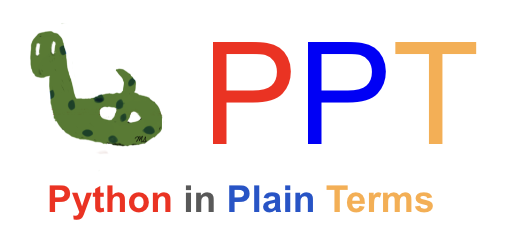Iterations Exercises#

Question-1#
Print the letters with negative even indexes (-2, -4, …) from the given text using:
a for loop
a while loop
slicing with a step. (use join method())
text = 'abcdefghijklmnopqrstuvwxyzABCDEFGHIJKLMNOPQRSTUVWXYZ'
Print the letters in a single line and comma separated.
Sample Output:
text : abcdefghijklmnopqrstuvwxyzABCDEFGHIJKLMNOPQRSTUVWXYZ
for loop : Y,W,U,S,Q,O,M,K,I,G,E,C,A,y,w,u,s,q,o,m,k,i,g,e,c,a
while loop: Y,W,U,S,Q,O,M,K,I,G,E,C,A,y,w,u,s,q,o,m,k,i,g,e,c,a
slicing : Y,W,U,S,Q,O,M,K,I,G,E,C,A,y,w,u,s,q,o,m,k,i,g,e,c,a
Question-2#
Find the sum of the first \(100\) terms of the following sequence:
\(\displaystyle \frac{1}{1^3+1^2}, \frac{1}{2^3+2^2}, \frac{1}{3^3+3^2}, \frac{1}{4^3+4^2}, ...\)
Use a for loop.
Use a while loop.
Question-3#
Ask the user to input a name and then insert a random punctuation mark between each character of the name.
Ensure that the output does not have a punctuation mark at the end.
Sample Output
Please enter a name : ashley
Randomly generated name: a&s#h”l#e”y
Question-4#
Ask the user to input a number and print the consecutive pairs of digits within this number.
Example: The consecutive digits in 156319672 are 56 and 67.
Sample Output
Please enter a number: 156319672
Consecutive pairs are: 56,67
Question-5: Secret Number Game#
This is another version of the Guess the Secret Number Game.
The user selects a secret 3-digit number.
The computer randomly selects a 3-digit number to find the secret number.
You can use random.randint or numpy.randint.
Count the number of attempts by the computer.
If the computer can find the secret number in fewer than 100 attempts, it wins; otherwise, it loses the game.
After each attempt, print the computer’s guess.
After each attempt, provide a hint to the computer whether the secret number is larger or smaller than the guess. The computer makes the next guess based on the hint
Sample Output
Choose a 3 digit secret number: 123
Try Number: 0 Guess: 654 is LARGE. Try Again!
Try Number: 1 Guess: 638 is LARGE. Try Again!
Try Number: 2 Guess: 467 is LARGE. Try Again!
COMPUTER WINS!
Number of tries: 3
Question-6: Scatter Plot#
Use a for loop to randomly select 100 points on a coordinate plane and plot them individually as a scatter plot. For each point:
The x and y coordinates are randomly chosen between 0 and 1.
The size of the point is a random number between 10 and 500.
The color is chosen from the characters of he following string: color_str = ‘rgbky’.
‘r’ represents red, ‘g’ represents green,’b’ represents blue, ‘k’ represents black,’y’ represents yellow
The transparancey is represented by a random number between 0 and 1.
Refer to the scatterplot section in Appendix: Visualization for implementation guidance.
Question-7: Empirical Probability#
Flip a coin 100 times and count the number of heads.
Use the string ‘TH’ to randomly select either ‘T’ (tail) or ‘H’ (head).
Randomly choose 0 or 1 as the index of the character that will be selected randomly.
Question-8: Rotating Stick#
Use a for loop and the sleep method from the time library to sequentially display the rotation of ‘’, ‘–’, and ‘/’ characters 20 times.
Add a waiting time between each character to simulate the rotation of a stick.
Ensure that after printing each character, it is deleted before the next one is printed to maintain the rotating effect.
Question-9: Counter#
Use a for loop and the sleep method from the time library to display a counter counting from 0 to 999.
Ensure that one-digit numbers have two zeros added to the left, and two-digit numbers have one zero added to the left.
After printing each number, delete it before the next one is printed to maintain the rotating effect.
Numbers: 001, 002,…,010,011,…,999
